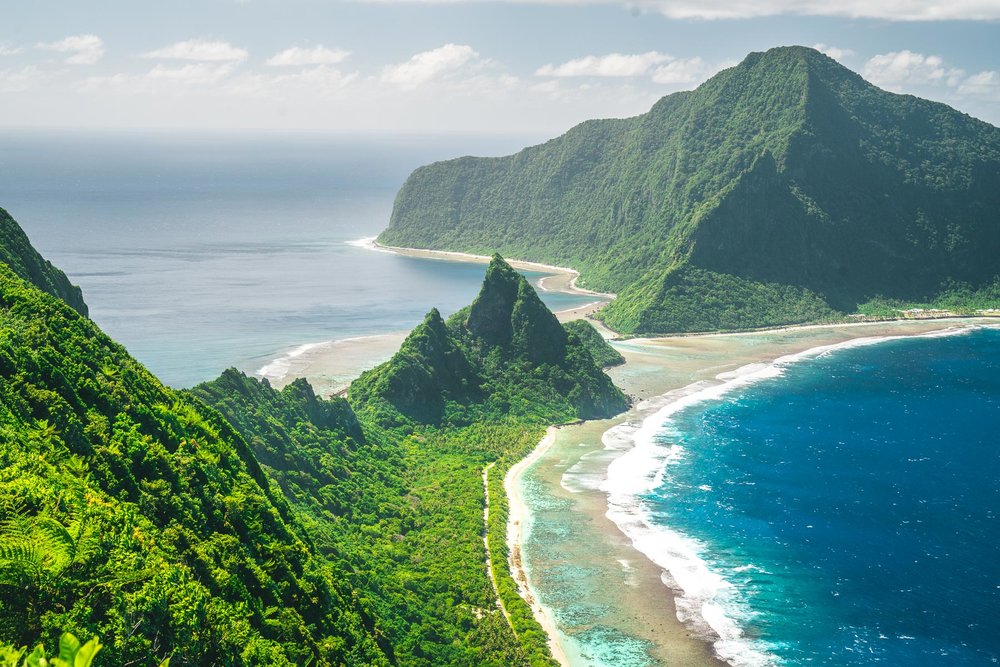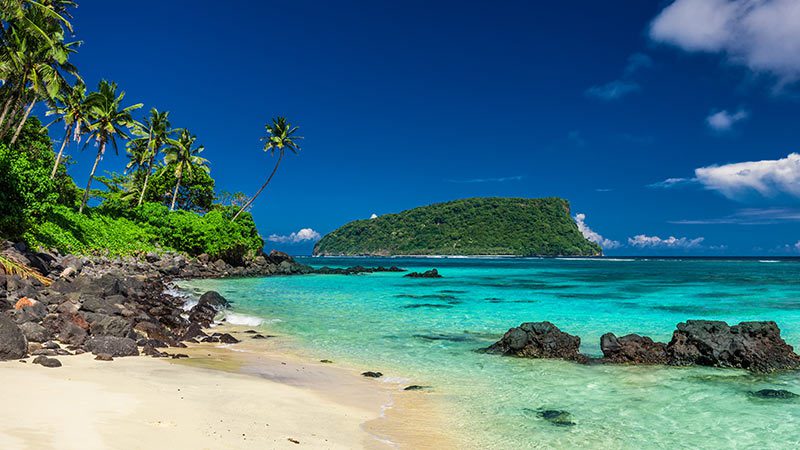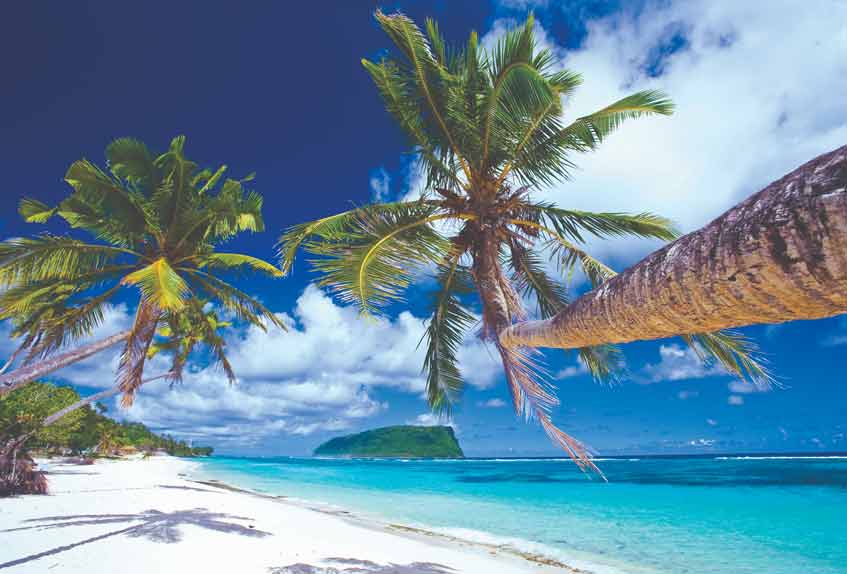
Nestled in the tranquil expanse of the South Pacific, Samoa emerges as a destination that transcends the typical tropical getaway. It’s a land where ancient traditions, breathtaking natural beauty, and the warmth of its people intertwine to create an unforgettable experience. Far from the bustling crowds of more commercialized islands, Samoa offers a genuine slice of Polynesian paradise, inviting travelers to slow down, connect with nature, and immerse themselves in the rich tapestry of Fa’a Samoa – The Samoan Way.
This comprehensive guide will equip you with everything you need to plan your journey to Samoa, from understanding its captivating history and discovering its top attractions to navigating its shores and embracing its unique culture.
A Glimpse into Samoa’s Rich History

Related Articles about Samoa: A Journey to the Heart of Polynesia:
- Paris: A Symphony of Charm, History, and Unforgettable Experiences
- Paris: A Timeless Guide to the City of Lights
- Rome: An Eternal City of Wonders, History, and Unforgettable Experiences
- Rome: A Timeless City and Your Guide to the Best Hotels
- Brazil: A Symphony of Nature, Culture, and Adventure – Your Ultimate Travel Guide
Samoa’s story is deeply rooted in the ancient migrations of the Polynesian people. The islands were first settled by the Lapita people around 3,000 years ago, making it one of the oldest cultures in the Pacific. Oral traditions speak of a complex social structure, powerful chiefs, and a deep connection to the land and sea.
European contact began in 1722 with Dutch explorer Jacob Roggeveen, but it was the arrival of Christian missionaries in the 1830s that profoundly impacted Samoan society, bringing new beliefs and writing systems. By the late 19th century, Samoa became a point of contention for colonial powers, with Germany, Britain, and the United States vying for control. The 1899 Tripartite Convention ultimately divided the Samoan archipelago, with the western islands (today’s independent Samoa) falling under German rule.
During World War I, New Zealand forces occupied German Samoa, and after the war, the League of Nations granted New Zealand a mandate to administer the territory. This period saw the rise of the Mau movement, a non-violent resistance advocating for Samoan self-governance, which eventually led to Samoa becoming the first Pacific island nation to gain independence on January 1, 1962.
One of Samoa’s most famous residents was Scottish author Robert Louis Stevenson, who spent the last four years of his life in Vailima, Upolu, and was deeply enamored with Samoan culture. His grave lies atop Mount Vaea, overlooking his beloved home. In a unique twist of history, Samoa also made headlines in 2011 by controversially jumping forward in time, crossing the International Date Line to align with its major trading partners, New Zealand and Australia. This move saw Samoans effectively skip December 30, 2011, making them among the first to see the sunrise on January 1.
Top Attractions: Unveiling Samoa’s Natural & Cultural Wonders
Samoa is blessed with an abundance of natural beauty, from pristine beaches and lush rainforests to dramatic waterfalls and unique geological formations. The two main islands, Upolu and Savai’i, each offer distinct experiences.
On Upolu (The Main Island):
- To Sua Ocean Trench: Often hailed as Samoa’s most iconic attraction, To Sua ("Big Hole") is a breathtaking natural swimming hole. A deep, turquoise pool nestled within a volcanic rock formation, it’s accessed by a steep wooden ladder, leading down to crystal-clear waters connected to the ocean via an underwater cave. Surrounded by lush gardens, it’s an otherworldly experience.
- Lalomanu Beach: Consistently ranked among the world’s most beautiful beaches, Lalomanu boasts powdery white sand, swaying palm trees, and calm, turquoise waters perfect for swimming and snorkeling. It’s also home to numerous beach fales, offering an authentic and affordable overnight experience.
- Piula Cave Pool: A natural freshwater spring that flows into the ocean, the Piula Cave Pool is a refreshing spot for a dip. You can swim into the underwater cave, emerging on the other side – a unique adventure.
- Papase’ea Sliding Rocks: For the adventurous, these smooth, moss-covered volcanic rock slides offer a natural waterslide experience, culminating in a cool plunge pool. Great fun for all ages, but be prepared for a bit of a climb.
- Robert Louis Stevenson Museum & Mount Vaea: Explore "Vailima," the beautifully restored colonial home of the famous author. Learn about his life in Samoa, his admiration for the Samoan people, and then embark on a moderate hike up Mount Vaea to his tranquil final resting place, offering panoramic views.
- Sopoaga Falls: A stunning waterfall cascading into a lush gorge, Sopoaga Falls is easily accessible from the roadside. The surrounding tropical gardens make for a picturesque stop and a great photo opportunity.
- Apia: The capital city offers a blend of colonial architecture, bustling markets, and modern amenities. Visit the Flea Market for local crafts and souvenirs, the Fish Market for a glimpse into daily life, and take a stroll along the Apia Waterfront or explore the Palolo Deep Marine Reserve for snorkeling.

On Savai’i (The Big Island):
- Alofaaga Blowholes: Witness the incredible power of nature as ocean waves surge through lava tubes, creating powerful geysers that shoot water hundreds of feet into the air. Local vendors often throw coconuts into the blowholes, adding to the spectacle.
- Sale’aula Lava Fields: A stark and poignant landscape formed by volcanic eruptions in the early 20th century. Walk across the hardened lava flows, where the remnants of a church and a virgin’s grave miraculously survived, offering a powerful testament to nature’s force.
- Canopy Walk (Falealupo Rainforest Preserve): Experience the rainforest from a different perspective on this suspended bridge, offering fantastic views and a chance to spot native birds.
- Afu Aau Waterfall (Olemoe Falls): A magnificent waterfall plunging into a deep, clear swimming hole, surrounded by lush vegetation. It’s a perfect spot for a refreshing swim and a picnic.
Getting There: Your Gateway to Paradise
Samoa’s main international gateway is Faleolo International Airport (APW) on the island of Upolu, approximately 35 kilometers west of Apia.
- Airlines: Major carriers serving Samoa include Fiji Airways (via Nadi), Air New Zealand (from Auckland), Qantas (seasonal from Sydney), and Hawaiian Airlines (from Honolulu). Connections are typically made through these hubs.
- Visa Requirements: Many nationalities, including citizens of the US, UK, Canada, Australia, New Zealand, and most European countries, are granted a 60-day visitor permit upon arrival, provided they have a valid passport, onward/return ticket, and sufficient funds. Always check the latest visa requirements for your specific nationality before traveling.
Navigating Samoa: Transportation Options
Getting around Samoa offers a mix of local charm and practical convenience.
- Inter-island Ferry: To travel between Upolu and Savai’i, the Samoa Shipping Corporation operates regular ferry services from Mulifanua Wharf (near Faleolo Airport on Upolu) to Salelologa Wharf on Savai’i. It’s an efficient and scenic journey.
- Rental Cars: Renting a car is highly recommended for independent exploration, especially on Upolu. Roads are generally well-maintained, but some rural tracks can be rough. Remember that Samoa drives on the left-hand side of the road. You’ll need to obtain a temporary Samoan driving permit (easily acquired at the Land Transport Authority office or through most rental agencies upon presenting your valid home country license).
- Local Buses: For a truly authentic Samoan experience, hop on a local bus. These brightly painted, often open-sided vehicles are a cultural icon, playing loud music and stopping frequently to pick up and drop off passengers. They operate on fixed routes but without strict timetables. Be prepared for a lively, often crowded, and slow journey.
- Taxis: Taxis are readily available in Apia and at the airport. Fares should ideally be negotiated before starting your journey, especially for longer trips.
- Organized Tours: Many resorts and local operators offer guided tours to major attractions, which can be a convenient option if you prefer not to drive.
Where to Stay: Accommodation for Every Traveler
Samoa offers a diverse range of accommodation options, catering to different budgets and preferences.
- Luxury Resorts: Predominantly found on Upolu, these resorts offer world-class amenities, stunning beachfront locations, swimming pools, spas, and fine dining. Examples include the Sheraton Samoa Beach Resort, Sinalei Reef Resort & Spa, and Taumeasina Island Resort.
- Mid-Range Hotels & Guesthouses: Throughout both Upolu and Savai’i, you’ll find comfortable hotels and guesthouses offering a good balance of amenities and value. These often include air-conditioning, private bathrooms, and sometimes a pool.
- Beach Fales: For an authentic and budget-friendly experience, staying in a beach fale is a must. These traditional, open-sided huts (some now have walls for privacy) are usually located directly on the beach. They typically come with a mattress, mosquito net, and communal bathroom facilities. Many offer breakfast and dinner, and the experience of falling asleep to the sound of the ocean is unparalleled. Lalomanu Beach and many spots on Savai’i are famous for their fales.
- Private Villas & Airbnbs: A growing number of private villas and Airbnb rentals are available, offering more space, privacy, and self-catering options, ideal for families or longer stays.
Travel Tips for a Seamless Samoan Adventure
To ensure a respectful and enjoyable trip to Samoa, keep the following tips in mind:
- Embrace Fa’a Samoa (The Samoan Way): This is the bedrock of Samoan society, emphasizing respect, family, community, and traditional customs.
- Dress Code: When visiting villages, especially on Sundays or for church services, dress modestly. Women should cover their shoulders and knees; men should wear shirts. Swimwear is only appropriate on beaches or at resorts.
- Sunday Observance: Sunday is a day of rest and worship. Most shops are closed, and villages are quiet. It’s a time for church, family, and relaxation. Avoid loud activities or swimming in village areas during Sunday prayer (sa).
- Ask Permission: Always ask permission before entering private land, taking photos of people, or swimming in a village area.
- Head Respect: The head is considered sacred. Avoid touching someone’s head.
- Don’t Step Over People: Walk around people, not over them, especially if they are sitting on the ground.
- Health & Safety:
- Sun Protection: The sun is incredibly strong. Use high SPF sunscreen, wear hats, and seek shade, especially between 10 am and 4 pm.
- Hydration: Drink plenty of bottled or filtered water.
- Insect Repellent: Mosquitoes are present, especially during the wet season. Use repellent to avoid bites.
- Reef Shoes: Essential for walking on coral, rocky beaches, and near waterfalls to protect your feet.
- Medical Facilities: Apia has a main hospital, but serious medical conditions may require evacuation to New Zealand or Australia. Travel insurance with medical evacuation coverage is highly recommended.
- Water Safety: Be aware of strong currents when swimming in the ocean, especially outside reef-protected areas.
- Money Matters:
- Currency: The local currency is the Samoan Tala (WST).
- ATMs: Available in Apia and Salelologa (Savai’i), but less common in rural areas.
- Cash is King: While major resorts and some restaurants accept credit cards, cash is preferred and often necessary for smaller purchases, local markets, fale stays, and entrance fees to attractions.
- Tipping: Not customary in Samoa, but a small gratuity for exceptional service is always appreciated.
- Communication:
- Language: Samoan is the official language, but English is widely spoken, especially in tourist areas. Learning a few basic Samoan phrases (e.g., "Talofa" – Hello, "Fa’afetai" – Thank you) will be appreciated.
- Connectivity: Local SIM cards (Digicel or Vodafone) are readily available at the airport and in Apia, offering affordable data and calls. Wi-Fi is available at most resorts and some cafes.
- Environmental Responsibility: Samoa’s beauty is fragile. Be mindful of your impact:
- Leave No Trace: Take all your rubbish with you.
- Respect Marine Life: Do not touch or stand on coral.
- Support Local: Buy local crafts and produce to support the community.
- Food & Drink:
- Local Delicacies: Try ‘Oka’ (raw fish marinated in coconut cream), ‘Palusami’ (taro leaves baked in coconut cream), and fresh seafood. ‘Umu’ (food cooked in an earth oven) is a traditional method.
- Fiafia Nights: Many resorts and fales host Fiafia nights, featuring traditional Samoan food, singing, and dancing. It’s a fantastic cultural experience.
- Kava: A traditional ceremonial drink made from the kava root. It has a mild sedative effect and is often shared in social gatherings.
Best Time to Visit: Chasing the Sun
Samoa experiences two main seasons:
- Dry Season (May to October): This is considered the best time to visit. Temperatures are pleasant (around 25-30°C/77-86°F), humidity is lower, and rainfall is minimal. The ocean is calm, making it ideal for swimming, snorkeling, and diving. This period also coincides with the Teuila Festival (usually in September), Samoa’s largest cultural event, celebrating Samoan heritage with traditional performances, crafts, and food.
- Wet Season (November to April): Characterized by higher temperatures, increased humidity, and more frequent, heavy rainfall (often in short, intense bursts). While the landscape is incredibly lush and green, there’s a higher risk of tropical storms or cyclones, particularly between January and March. Prices for flights and accommodation can be lower during this season.
Conclusion
Samoa is more than just a destination; it’s an invitation to experience a way of life that cherishes community, tradition, and the pristine beauty of nature. From the exhilarating plunge into To Sua Ocean Trench to the tranquil evenings spent in a beach fale, and the profound lessons of Fa’a Samoa, a journey to these islands promises a profound and enriching adventure. Prepare to be enchanted by its landscapes, embraced by its people, and forever changed by the spirit of the South Pacific’s hidden gem. Talofa lava and safe travels to Samoa!





